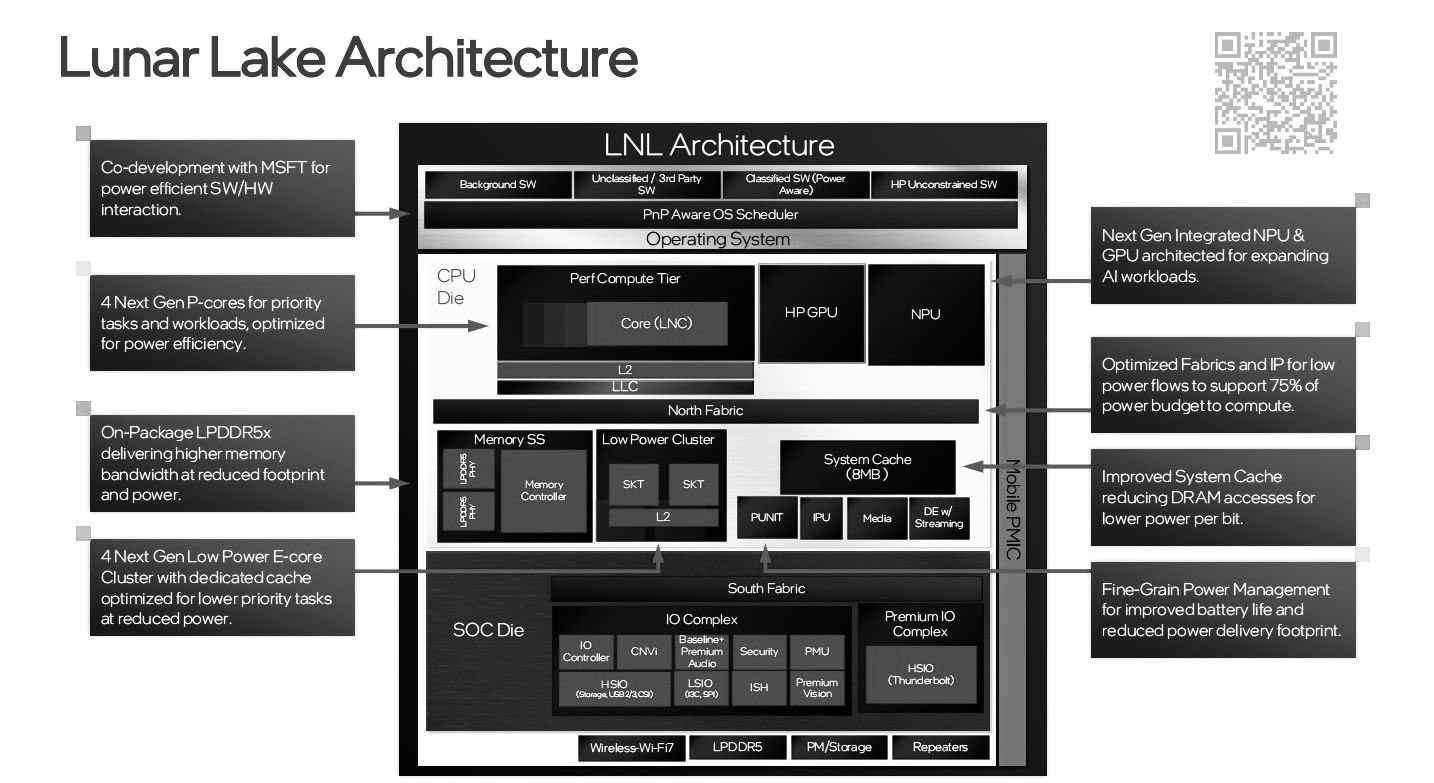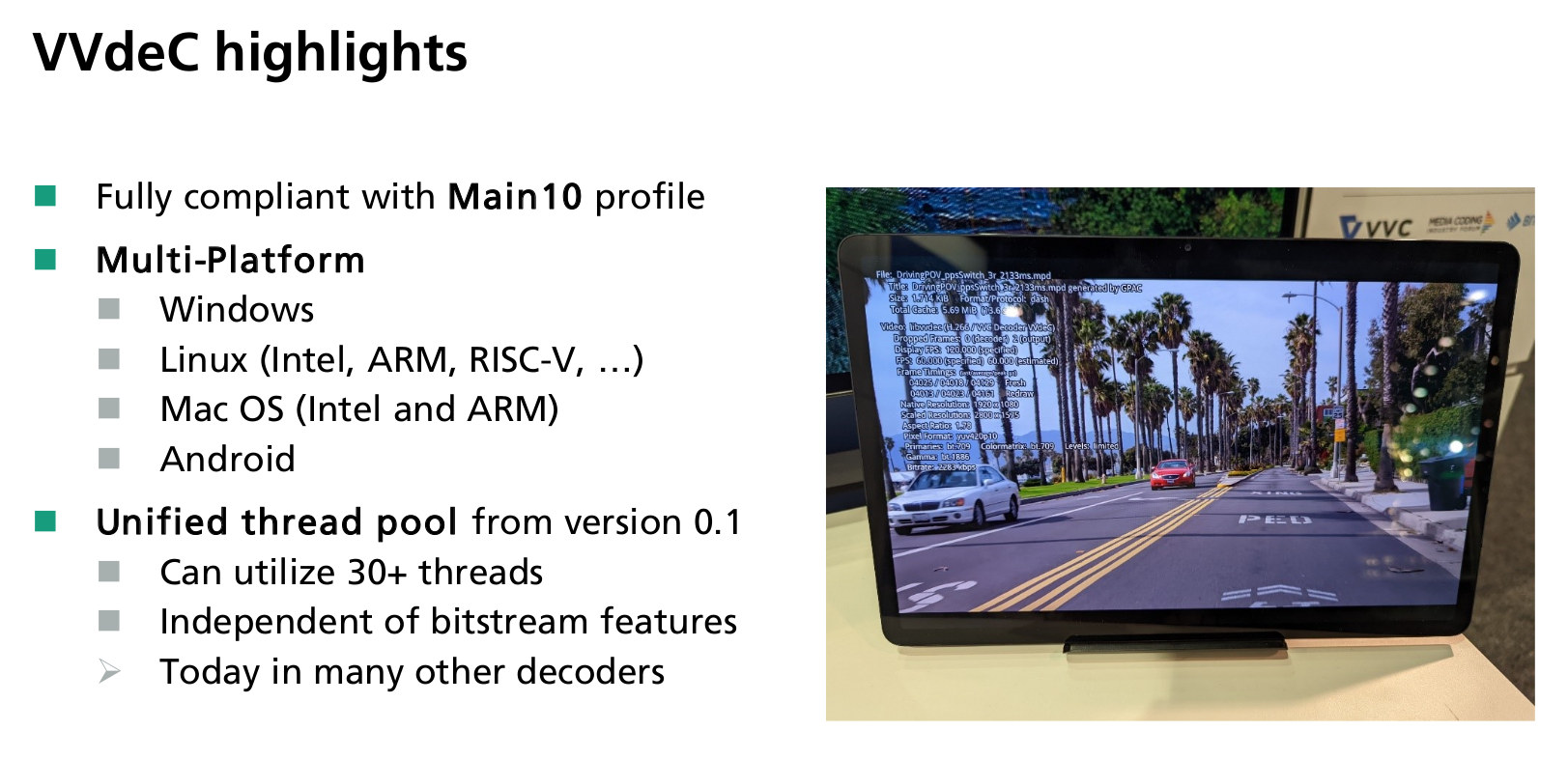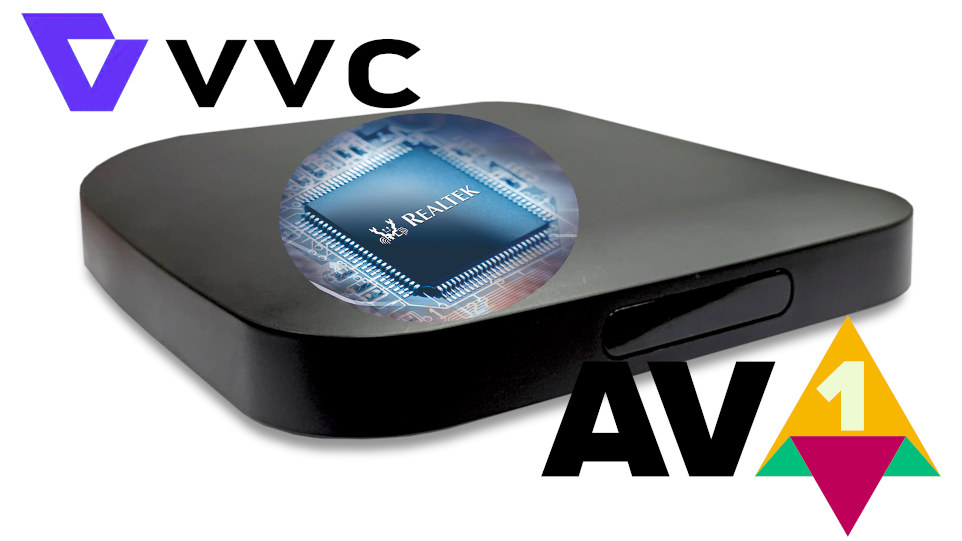While Intel Meteor Lake mobile processors are yet to become available, we already have a leak that provides quite a lot of details about the next-generation Lunar Lake hybrid mobile processor family (LNL MX) with supports for 8W to 30W base power designs and 16GB or 32GB on-chip LPDDR5x memory (Memory-on-Package, or MoP) to deliver higher memory bandwidth at reduced footprint and power. Developed in collaboration with Microsoft, the new Lunar Lake processor will come with four P-cores and four low-power E-cores, a new generation NPU and GPU architecture for AI workloads, and improved power management for lower power consumption (40% scenario power reduction) and improved battery life. Four SKUs are currently planned with either 16GB or 32GB dual-channel LPDDR5X memory: Core 7 MS3 (+ MoP) – Octa-core “12M” processor with 4x P-cores, 4x E-Cores, 8-core Xe2-LPG GPU, and 6-tile (12K9M) NPU Core 5 MS1 (+MoP) – Octa-core “8M” processor […]
Amlogic S905X5 Armv9 TV Box SoC supports AV1, H.266, Ai-SR
The Amlogic S905X5 may be first the Armv9 processor designed for set-top boxes (STB) and TV boxes, supports the latest AV1 and H.266 video codecs, and also comes with a 4 TOPS AI accelerator. We don’t have the full details yet, and the news comes from a tease from SEI Robotics which is about to unveil an Amlogic S905X5 AI-SR (AI Super Resolution) Android TV box at IBC 2023. Preliminary specifications for S905X5 SoC and SEI Robotics TV box: SoC – Amlogic S905X5 CPU – Quad-core Armv9 CPU (likely Cortex-A510 cores) delivering 40K+ DMIPS GPU – Arm Mali-G310 V5 entry-level GPU clocked at 1 GHz for 4K HDR user interfaces VPU – Up to 2x 4Kp60 10-bit H.266/VCC and AV1 video codecs, and the usual VP9, AVS3, H.265/HEVC, H.264 AI accelerator – 4 TOPS NPU enabling AI-SR Process – “Second generation” 6 nm process System Memory & Storage – TBD […]
VVenC & VVdeC H.266 open source video encoder and decoder work on x86 and Arm
VVenC and VVdeC are open-source software H.266/VCC video encoder and decoder respectively that are optimized to use SIMD instructions on x86 (SSE42/SIMDe and AVX2) and Arm, and the decoder runs on Windows, Linux, macOS, and Android. H.266, aka VCC (Versatile Video Coding) video compression standard was adopted in 2020 promising to reduce data requirements by around 50% compared to the previous H.265/HEVC standard at the same visual quality. H.266 should also outperform the royalty-free AV1 video codec. We hadn’t seen news since the announcement, but this may be changing with the Realtek RTD1319D processor unveiled with support for both 4K H.266 and AV1 video decoding last September, and progress made on the VVenC & VVdeC H.266 open-source software encoder/decoder as been discussed during FOSDEM 2023. The Fraunhofer HHI group has been working on VVdeC and VVenC since the specifications were finalized in 2022. Both are based on VTM reference software […]
Realtek RTD1319D STB processor supports 4K H.266 and AV1 video decoding
Realtek RTD1319D is the first set-top box processor to support H.266 (aka Versatile Video Coding) video compression standard. The new SoC also provides a GPU with 10-bit graphics, support for multiple Conditional Access Systems (CAS), and HDMI 2.1a video output capable of up to 4Kp60 with HDR. One would have thought the royalty-free AV1 video codec might have killed licensed codecs such as H.266, but it’s clearly not the case, since Realtek decided to launch the RTD1319D processor with the new codec, and the primary reason may be because the H.266/VCC codec was added to the DVB specification last February for both 4K (3840×2160) and 8K (7680×4320) resolutions. Realtek RTD1319D preliminary specifications: CPU – Quad-core Arm processor GPU – Unnamed GPU with 10-bit graphics Video Output – HDMI 2.1a up to 4Kp60 HDR Video Codecs 4Kp60 Versatile Video Coding (VVC/H.266) 4Kp60 AV1, H.265 Tuner support Built-in DVB demodulators Multiple TS […]
Fraunhofer HHI H.266/Versatile Video Coding (VVC) Halves the Data Requirements of H.265
There’s a lot of hype around AV1 royalty-free video codec since it has backing from large companies, better characteristics than H.265 or VP9, and is already used by YouTube and Netflix. AV1 hardware decoders are also found in new processors like Amlogic S905X4 or Mediatek Dimensity 1000+. But we previously noted that H.266, aka VCC (Versatile Video Coding), was in the works, and Fraunhofer HHI has just announced the release and official adoption of the H.266/Versatile Video Coding (VVC) video compression standard. H.266 standard offers improved compression, which reduces data requirements by around 50% compared to the previous H.265/HEVC standard at the same visual quality. In practical terms, a 10GB H.265 video now only needs 5GB with H.266 video codec saving both storage and bandwidth. The standard can be used to transmit and store commonly used video resolutions from SD to HD up to 4K and 8K and also supports […]







